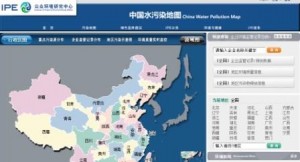In Beijing, targeting polluters with Google Maps


BEIJING -- China’s transformation into a manufacturing superpower has left the country with a dire legacy of air and water pollution. But light punishments for polluters mean that Chinese factories often have little incentive to improve their behaviour.
That’s why one Beijing NGO turned to Google Maps to track the location of some of China’s most heavily polluting companies, putting pressure on multinationals like Walmart to clean up their Chinese supply chain.
A suburban apartment in southern Beijing is home to The Institute of Public and Environmental Affairs (IPE), which collects reports on hundreds of pollution incidents from across China each week. The NGO combines that data with Google’s map service to generate a map showing the location of China’s most polluting firms.
A crowd of blue markers covering the map show the location of each firm, some of which can be clicked on to access pollution reports. The map is partly about “naming in shaming" polluters, who can have their names removed from the database if they pass an independent environmental audit.
Some of those blue markers have been wiped off the map, as multinationals use the IPE’s data to make improvements in their supply chains. Using data from the pollution map, Walmart ordered a Chinese shoe supplier which was found to be emitting excessive levels of air and water pollution to take corrective action in 2008. After Walmart intervened, the supplier installed new wastewater treatment facilities to bring it in line with China’s national standard.
Local governments in China tend to punish polluters with fines, which aren’t heavy enough to be a real deterrent for most firms. “Some firms pay fines every year and carry on polluting,” IPE employee Matthew Collins said. Putting pressure on foreign companies to clean up their suppliers can be much more effective, according to Collins.
The pollution map isn’t totally comprehensive. Most of the data is gathered from government documents, which are “far from complete,” according to a recent IPE report. The NGO’s work has mostly focused on electronics multinationals with suppliers in China, but pollution from Chinese manufacturers who supply Western clothing brands are next on the NGO's target list, Collins said.
This post was originally published on Smartplanet.com